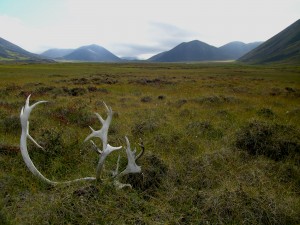
Hunting is important for many reasons, many of which I will not be able to fully explore. One is to control the herd, and if you noticed, the herd in this area around Houghton is very large. Especially in areas where the nutrition is high, deer reproduction is very high. What people tend to overlook is that if we don’t reduce numbers from the herd, there can become too many animals and not enough resources, such as food and water, to sustain all of them. Herd management is the responsible approach contributing to the sustainability of both the deer population and the natural resources at stake.
Herd management is much deeper for me though, because I don’t look at deer as numbers. Deer management is an art in my mind. Myself and several friends put forth significant efforts in providing the deer on our property with the nutrition in the form of food plots. We provide the deer with the nutrition and help create ideal habitats on the property through proper forestry practices. We have a management plan for our property which basically means that the senior members of our party are only allowed to shoot bucks with six points or more or any doe they wish.
So why do I hunt? I am not out for blood, and that would be a serious misconception of hunters. I care more about taking care of deer and the land than any pencil pushing PETA member will ever do by protesting hunting. The act of killing is not always fun, but killing is only a part of the overall whole. When you have the larger whole of a hunting group (as close as a family) together, the fellowship and the bonds created between people by the activity of the hunt are nearly indestructible.
Here in New York, deer hunting is rooted deeply in the culture especially in the area we find ourselves attending college. Did you know that in 1939 Calvin Roosevelt Lucky killed the state record buck that stood for over 70 years right in Fillmore? The deer sported over 200 inches of antler on its head. Even for anyone not particularly familiar with deer, you have to admit, having over 200 inches of bone sticking out of the top of an animal’s head is a lot.
Ways to prepare venison.
1) Jerky- The key to jerky is how you prepare it. First step is to make sure you cut it into thin strips that can dry thoroughly, and also remember with jerky that you are not cooking the meat, but are drying it. Second, you want to make up the spices you wish to cure the meat in. Many quality jerky cure kits can be bought at any sporting goods store. Let the meat sit for several days in a cool area to really let the cure do its job. The drying part of the job can be done in an oven, but I prefer to use my dehydrator at home. If you are going to use an oven, heat the oven between 150 and 200 degrees, and I tend to let it dry for 12 or more hours.
2) Venison stew in a crockpot. What I do is take a few nice haunches of venison, chopped vegetables like peppers, onions, potatoes, and carrots throw them into the crockpot with gravy seasoning packet and slow cook it all day.
3) Grilling- If you have the opportunity to grill your venison, I would suggest finding a marinade that you prefer and pre-soak it. Keep a close eye on your steaks; take my word for it especially if you want to eat your venison off the grill medium rare, trust me. And sautédvegetables to go with your venison steak is always an excellent choice.
I don’t know how many times I’ve eaten at the dining hall with a hollow appreciation for my food, and I am sure that you have felt the same. Every time I eat a piece of venison I can still feel that same joy and thankfulness for the animal as the same moment I knelt by its side and praised God.
